Plants of Range Creek
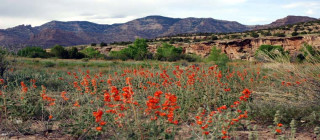
From the headwaters of Range Creek at about 10,000 feet above sea level to its confluence with the Green River thirty miles and 6000 feet lower, Range Creek flows through several easily recognizable plant communities. Growing in each of these communities are edible wild plants that would have been part of the prehistoric diet. Dietary inferences are based on the artifacts (e.g. manos, metates, baskets, ceramics) and ruins (granaries, cists, storage pits) associated with a particular culture. Even more information is available through microscopic examination of the surfaces of tools, house floors, and work areas. Labratory analyses of pollen, startches, bits of plant material and chemical/isotopic composition provide direct dietary evidence.
Range Creek Environmental Setting
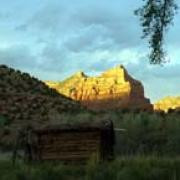
Cottonwoods (Populus fremontii), box elder (Acer negundo), arrow cane (Phragmites australis), cattails (Typha sp.), willows (Salix sp.) and skunkbrush (Rhus trilobata) are found in the narrow riparian band along the channel of Range Creek. This green strip stretches along the length of the canyon to the Green River. Prehistoric foragers may have fished or hunted for small game here and would have been able to collect edible berries, roots, and greens for the dinner pot. This area also would have supplied the materials necessary to make many of the tools and household goods like baskets, arrows, snares, and mats.
At the upper elevations of the north end of the canyon Douglas fir (Pseudotduga menziesii) and quaking aspen (Populus tremuloides) are the most conspicious element of the plant community. Almost nothing grows inside these dense pine forests but edible plants can be found on the floor of the canyon or in clearings. Those who look closer will notice choke cherry (Prunus virginiana), rabbit brush (Chrysothamnus viscidiflorus), columbine (Aquilegia flavescens), and maple (Acer grandidentatum). Seeds and berries would have been available in these clearings and hunters would have found deer and elk here from late spring until the heavy snow set in.
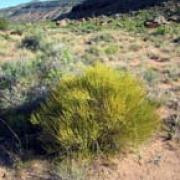
Traveling down Range Creek the pine forests are replaced by pinyon-juniper woodlands. Mature stands of pinyon pine (Pinus edulis) and Utah juniper (Juniperous osteosperma) grow on the hillsides, benches and cliffs with dense stands of sagebrush (Artemesia tridentata) crowding the valley floor. Unlike the dense evergreen stands this is a productive zone. Pine nuts which are rich in nutrients and easy to store for winter use were an important part of the prehistoric diet. Hunters would have found deer here, browsing on shrubs and sheltering beneath the trees. During the prehistoric period the floor of the valley probably looked very different than it does today. The first ranchers to enter the canyon called it Range because of the thick grass found growing there.
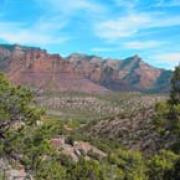
At the lower end of the canyon, spring comes early and temperatures routinely reach 100° in the summer. Stands of greasewood (Sarcobatus vermiculatus) and shadscale (Atriplex confertifolia) replace much of the sagebrush. The pinyon-juniper woods thin out with the more heat and drought tolerant juniper becoming the dominant species. Indian rice grass (Stipa hymenoides) and Mormon tea (Ephedra spp.) thrive on the slopes and dunes of this part of the canyon. This would have been a highly productive zone especially early in the season. The first fresh green shoots would have been found here and provided a welcome addition to the diet after the long winter.
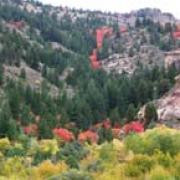
More than a hundred years of farming and grazing has resulted in changes to the plant community, particularly in areas of heavy and sustained use such as the ranch complex and pastures. Weeds that thrive in disturbed soils such as members of the pigweed (Amaranthus spp.) and goosefoot (Chenopodium spp.) families are common as are introduced species such as tamarisk (Tamarix ramosissima), Russian olive (Elaeagnus angustifolia), Russian thistle (Salsola iberica), and cheat grass (Bromus tectorum). The burred and prickled seeds of non-native species like burdock (Arctium minus), houndstongue (Cynoglossum officinale) and musk thistle (Carduus nutans) quickly spread after becoming entangled in the hair and wool of livestock. Some changes are the result of natural fluctuations in weather patterns but some result from the actions of humans - historically and prehistorically. We know that farming was practiced by the prehistoric inhabitants of the canyon and this would have required some preparation for even the smallest garden plots. Native Americans routinely used fire to burn off unwanted plants and to encourage the growth of grasses and desirable species and the buildup of deadwood would have been less since due to their use as building materials or firewood. Researchers are currently using many methods to understand the role of both natural and human impacts to the Range Creek ecosystem.